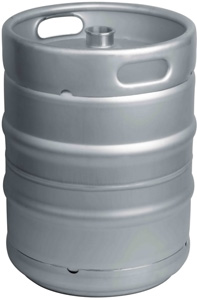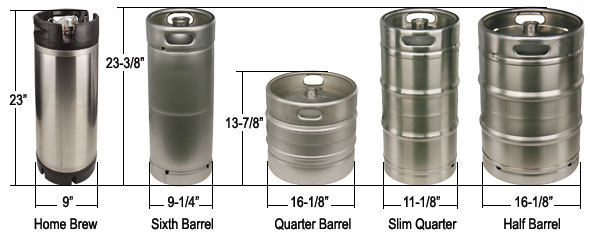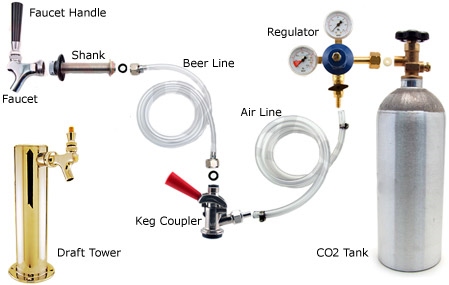Difference between revisions of "Keg beer"
m |
m |
||
| Line 16: | Line 16: | ||
So the average keg has 25-40 days of shelf life at the tavern. | So the average keg has 25-40 days of shelf life at the tavern. | ||
| + | |||
| + | | ||
== Pasteurization == | == Pasteurization == | ||
| Line 24: | Line 26: | ||
Most keg draft beers brewed outside the U.S. (Import beers), as well can and bottle beers in the U.S., are heat pasteurized during brewing. This process kills off the bacteria that ferment the beer. Import draft beers can be stored at room temperature and chilled at the point of dispense by use of a flash chiller. However, for logistical reasons, most bars and restaurants keep their import kegs at the same temperature as the domestic kegs. | Most keg draft beers brewed outside the U.S. (Import beers), as well can and bottle beers in the U.S., are heat pasteurized during brewing. This process kills off the bacteria that ferment the beer. Import draft beers can be stored at room temperature and chilled at the point of dispense by use of a flash chiller. However, for logistical reasons, most bars and restaurants keep their import kegs at the same temperature as the domestic kegs. | ||
| + | |||
| + | | ||
== Dimensions and Capacity == | == Dimensions and Capacity == | ||
| Line 45: | Line 49: | ||
[[Image:kegsizenaddimchart.jpg]] | [[Image:kegsizenaddimchart.jpg]] | ||
| + | | ||
| + | |||
| + | == Installation== | ||
| + | |||
| + | [[Image:large_eck-collage.jpg]] | ||
| | ||
Revision as of 14:43, 12 November 2009
Shelf Life
Keg beer will remain fresh if dispensing with CO2, while maintaining the proper temperature and pressure:
- Non-pasteurized draft beer about 45-60 days.
- Pasteurized draft beer about 90-120 days.
Dispensing keg beer with a party pump (air):
- Any draft beer will remain fresh for no more than 8-12 hours.
Air contains oxygen, and oxygen is an enemy of beer. Non-pasteurized beer has a shelf life of 45-60 days. Here is an example of a keg’s life:
- Days 0-10 (Transit / Satellite Warehousing)
- Days 10-20 (Distributor Warehouse / Retail Delivery)
- Days 20-60 (At Tavern)
So the average keg has 25-40 days of shelf life at the tavern.
Pasteurization
Most keg draft beers brewed in the U.S. are not pasteurized during brewing. During the packaging process non-pasteurized draft beers are chilled to the point that the bacteria which ferments the beer becomes dormant.
Temperatures above 38°F will cause non-pasteurized draft beers to foam and promote sour/cloudy beer. Should the temperature of non-pasteurized draft beers rise above 50-55°F, the dormant bacteria which ferments the beer will once again become active, and growth will rapidly begin to spoil flavor and cloud the beer. This is commonly referred to as secondary fermentation.
Most keg draft beers brewed outside the U.S. (Import beers), as well can and bottle beers in the U.S., are heat pasteurized during brewing. This process kills off the bacteria that ferment the beer. Import draft beers can be stored at room temperature and chilled at the point of dispense by use of a flash chiller. However, for logistical reasons, most bars and restaurants keep their import kegs at the same temperature as the domestic kegs.
Dimensions and Capacity
The standard keg size is the half barrel. Specifications for a U.S. 1/2 barrel keg are as follows:
- Height of keg 23.3 inches
- Diameter of keg 16.1–17.15627 inches
- Contents 1984.0 U.S. fluid ounces
- 15.5 U.S. gallons
- 12.91 imp. gallons
- 58.7 liters
- Full keg weight 160.5 pounds (72.8 kg)
- Empty keg weight 29.7 pounds (13.5 kg)
- Beer weight 130.8 pounds (59.3 kg)
- 24×12 fl oz case equivalent 6.9 cases
- 12 fl oz servings 165.333
- 16 fl oz (1 U.S. pint) servings 124
This chart shows various keg sizes and their dimensions:
Installation


